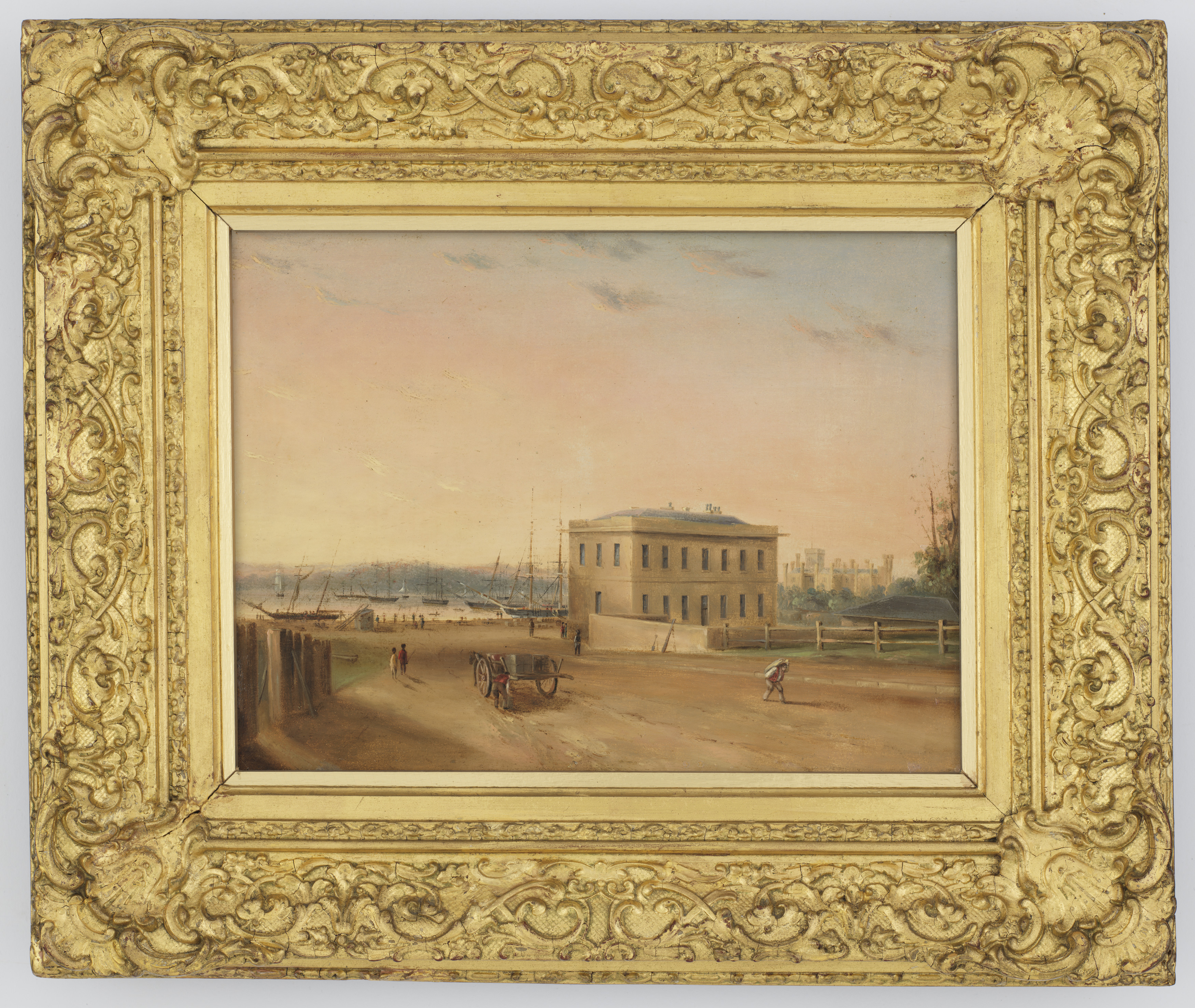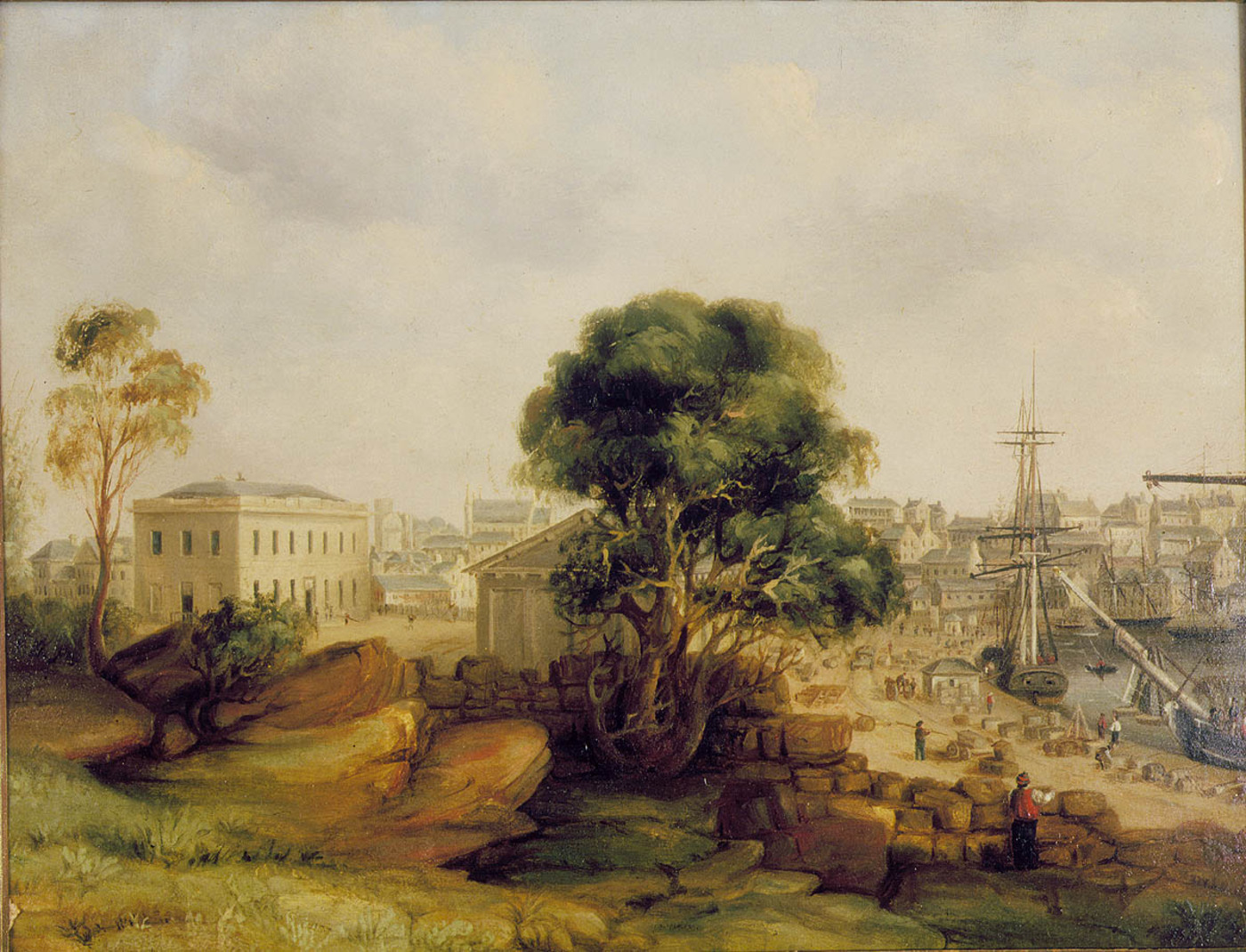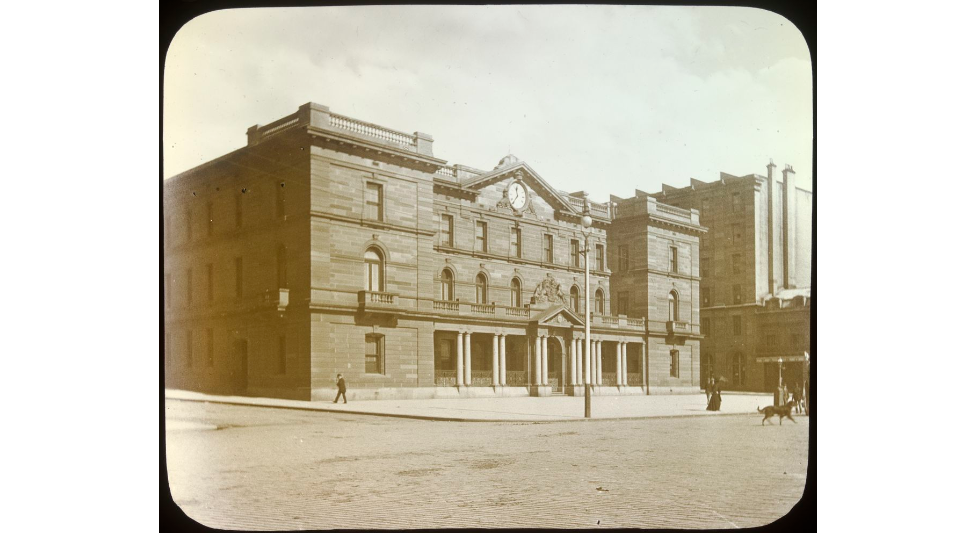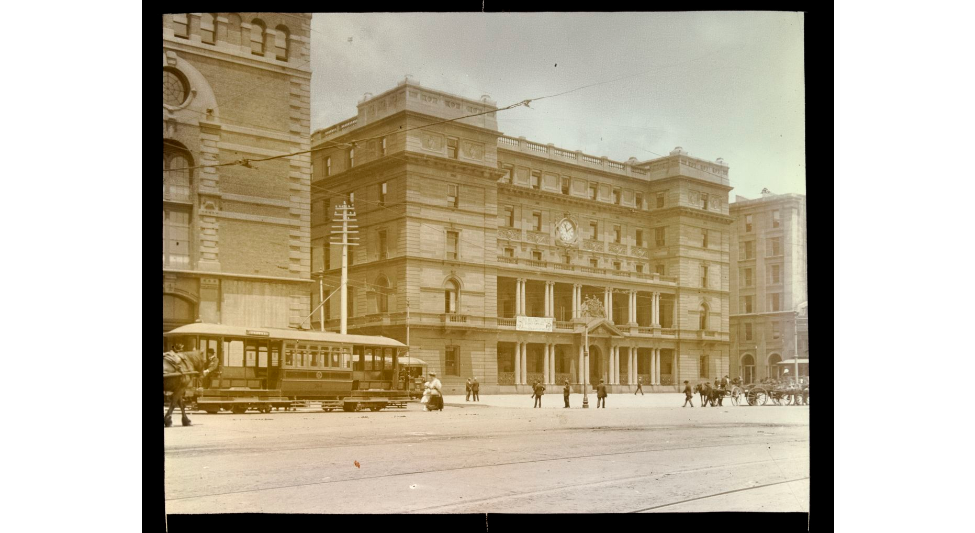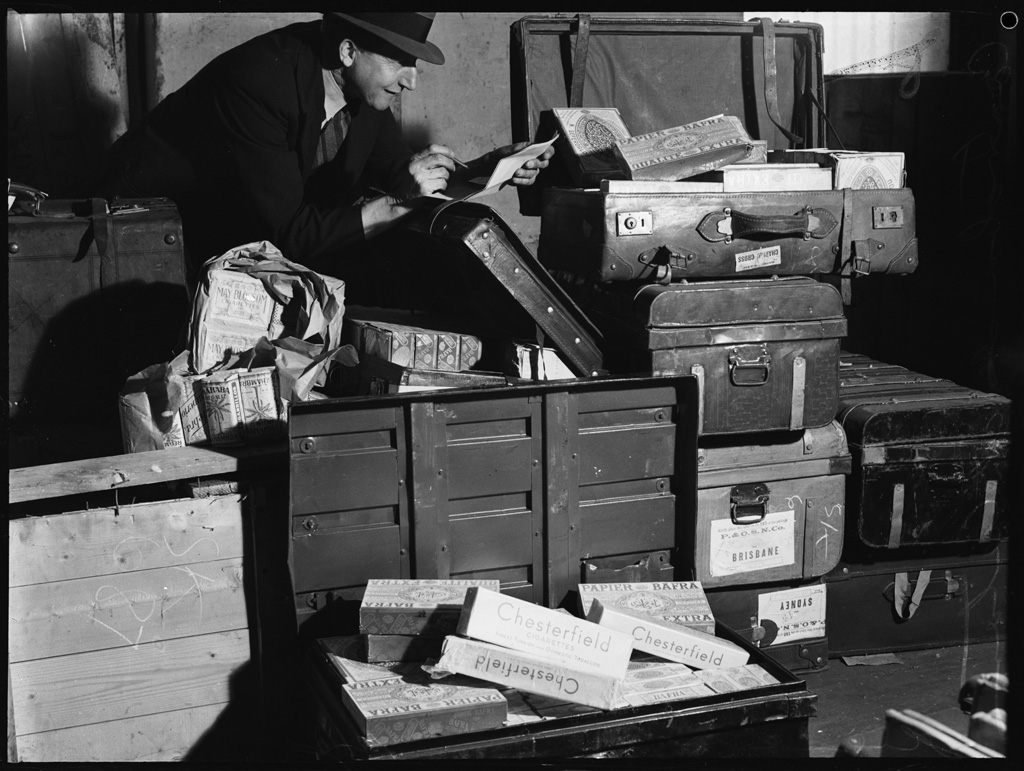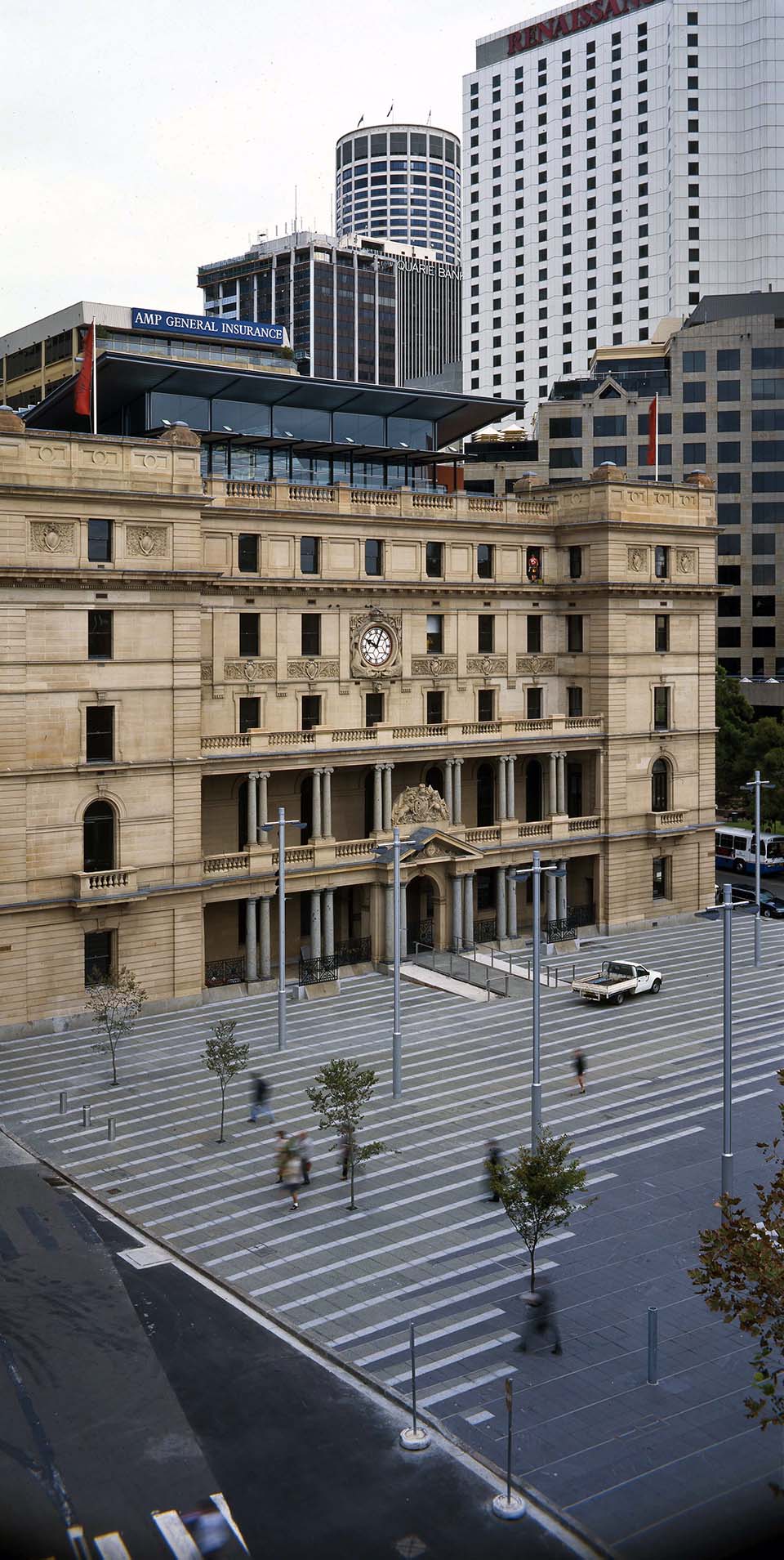The Dictionary of Sydney was archived in 2021.
Customs House
Citation
Persistent URL for this entry
To cite this entry in text
To cite this entry in a Wikipedia footnote citation
To cite this entry as a Wikipedia External link
Customs House
[media]Customs duties were first collected in New South Wales in 1799, initially by the Registrar of Imports and Exports, and then by the Naval Officer until 1827. In this year, customs officers came under control of the London-based Board of Commissioners of Customs. The subsequent appointment of the Collector and Comptroller of Customs by the British Treasury and the New South Wales Customs Regulation Act of 1830 laid the groundwork for the construction of a Customs House in Sydney.
[media]The first dedicated customs offices under the new legislation were temporarily located in the Argyle Stores in The Rocks from 1830. The reclamation of the tidal foreshores of Sydney Cove for shipping purposes, begun in the 1830s and completed the following decade, made additional land available for wharfage, and buildings associated with the maritime trade, including warehouses and wool stores. The present site of Customs House, on reclaimed land straddling the original high water mark, and bounded by the First Government House gardens to the rear, was selected in the early 1840s. Customs House was prominently sited to take advantage of the shipping at Circular Quay.
Mortimer Lewis, Government Architect from 1836 to 1849, designed the first Customs House. Construction began in 1843 and provided important unemployment relief work. The building, a simple double-storey structure in the Greek Revival style, was completed in 1845.
[media]Control of the Customs Department was transferred to the colonial government in the early 1850s, with the introduction of responsible government in NSW. Customs House was primarily used as offices for customs staff and as a clearing house for port transactions. Bonded goods were stored in the Queen's Warehouse, in the south-east corner of the Customs House grounds, although with the growth of trade much of this storage was contracted out to private bond storage companies. A number of structures in the yard behind serviced the main building, including stables and accommodation for customs employees along the southern boundary.
[media]The Customs Department carried out many functions apart from collecting duties as the nineteenth century progressed, including shipping, tide surveying, immigration and censorship. Staff included customs collectors, warehouse keepers, boat crews, messengers, landing surveyors and tide waiters. Customs House also accommodated other government departments in these decades, including the Shipping Office and the Marine Board.
[media]Customs staff complained bitterly about the conditions inside the main building, which was cold and damp because it had been built on reclaimed land. The building became increasingly dilapidated and overcrowded throughout the 1860s and expenses for repairs escalated throughout the 1870s. By the early 1880s, the building was in a state of disrepair and had outgrown its use. It was decided to extend Customs House, under the instruction of the Colonial Architect, James Barnet. The siting of the original building and the alignment of the streets surrounding it limited the way extensions could proceed. The floor space of Customs House was increased by keeping the central wing and adding projecting wings to east and west. The height of the building was increased by one level, and a portico was added to the front of the Lewis wing. In effect, the building was reconstructed, and the only remnant of the Lewis building that remained was the Long Room. The work was completed by the late 1880s.
[media]Further works were planned and carried out in the late 1890s and into the new century by the Government Architect, Walter Liberty Vernon, to accommodate new government departments, including the Land and Income Tax Office. A new wing was added to the southern elevation of the central block, and the building was increased to five storeys throughout.
[media]The Customs department, and Sydney's Customs House, came under federal government control at the turn of century. The Commonwealth Customs Department, formed under the Customs Act 1901, occupied Customs House until 1990. Although central customs operations were moved to Melbourne, Sydney's Customs House was heavily used for much of the twentieth century as it was the headquarters of customs in NSW.
The customs function of the building ceased and the federal government leased the Customs House to the City of Sydney Council in 1990, for use as a public building. It was refurbished in the mid-1990s as a multi-purpose venue with shops, restaurants, galleries and function rooms. While the façade was left intact, the rabbit-warren offices were removed. A square was laid out in front of the Customs House, which entailed the closure of part of Alfred Street. Customs House was reopened in 2005 as the headquarters of the city library.
References
City of Sydney, Customs House website http://www.cityofsydney.nsw.gov.au/customshouse



